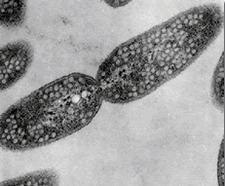Phylum Proteobacteria Rank Species | Scientific name Rhodobacter sphaeroides Higher classification Rhodobacter | |
 | ||
Similar Rhodobacter, Rhodopseudomonas, Rhodospirillum rubrum, Rhodospirillum, Paracoccus denitrificans | ||
Hydrogen production by rhodobacter sphaeroides o u 001
Rhodobacter sphaeroides is a kind of purple bacterium; a group of bacteria that can obtain energy through photosynthesis. Its best growth conditions are anaerobic phototrophy (photoheterotrophic and photoautotrophic) and aerobic chemoheterotrophy in the absence of light. R. sphaeroides is also able to fix nitrogen. It is remarkably metabolically diverse, as it is able to grow heterotrophically via fermentation and aerobic and anaerobic respiration.
Contents
- Hydrogen production by rhodobacter sphaeroides o u 001
- Medical vocabulary what does rhodobacter sphaeroides mean
- Accepted name
- Synonyms
- References
Rhodobacter sphaeroides has been isolated from deep lakes and stagnate waters.
Rhodobacter sphaeroides is one of the most pivotal organisms in the study of bacterial photosynthesis. It requires no unusual conditions for growth and is incredibly efficient. The regulation of its photosynthetic machinery is of great interest to researchers, as R. sphaeroides has an intricate system for sensing O2 tensions. Also, when exposed to a reduction in the partial pressure of oxygen, R. sphaeroides develops invaginations in its cellular membrane. The photosynthetic apparatus is housed in these invaginations. These invaginations are also known as chromatophores.
The genome of R. sphaeroides is also somewhat intriguing. It has two chromosomes, one of 3 Mb (CI) and one of 900 Kb (CII), and five naturally occurring plasmids. Many genes are duplicated between the two chromosomes but appear to be differentially regulated. Moreover, many of the open reading frames (ORFs) on CII seem to code for proteins of unknown function. When genes of unknown function on CII are disrupted, many types of auxotrophy result, emphasizing that the CII is not merely a truncated version of CI.
Bacterial small RNAs have been identified as components of many regulatory networks. Twenty sRNAs were experimentally identified in Rhodobacter spheroids, and the abundant ones were shown to be affected by singlet oxygen (1O2) exposure. 1O2 which generates photooxidative stress, is made by bacteriochlorophyll upon exposure to oxygen and light. One of the 1O2 induced sRNAs SorY (1O2 resistance RNA Y) was shown to be induced under several stress conditions and conferred resistance against 1O2 by affecting a metabolite transporter.
